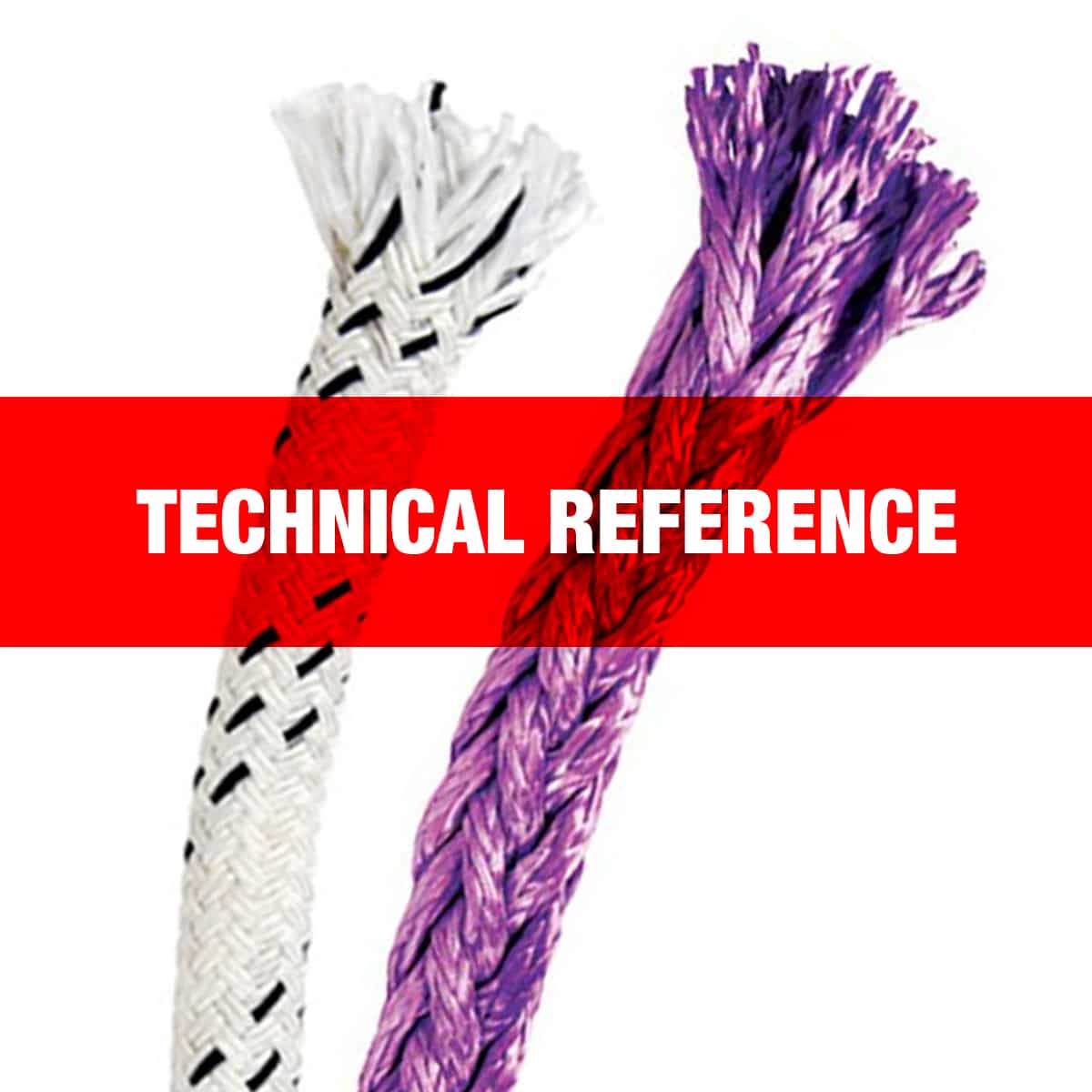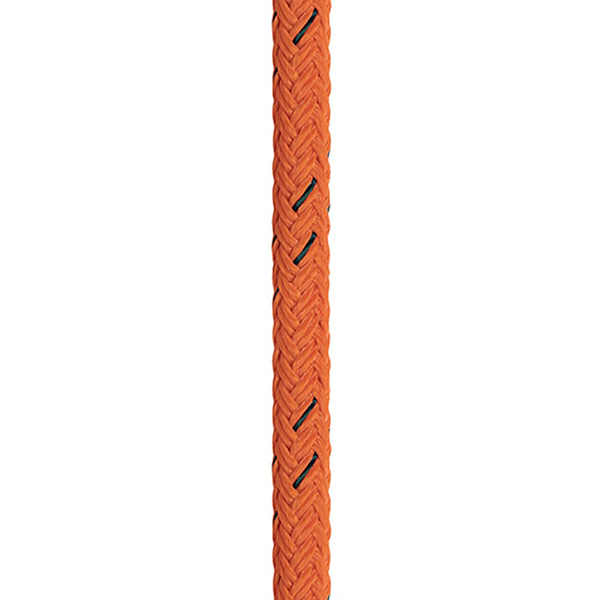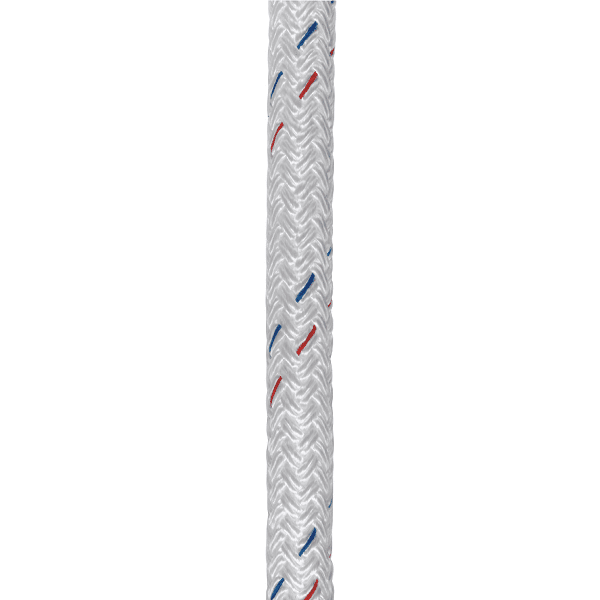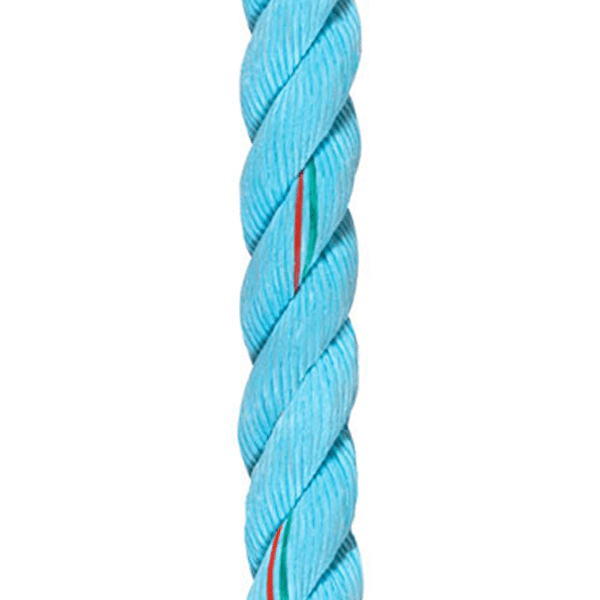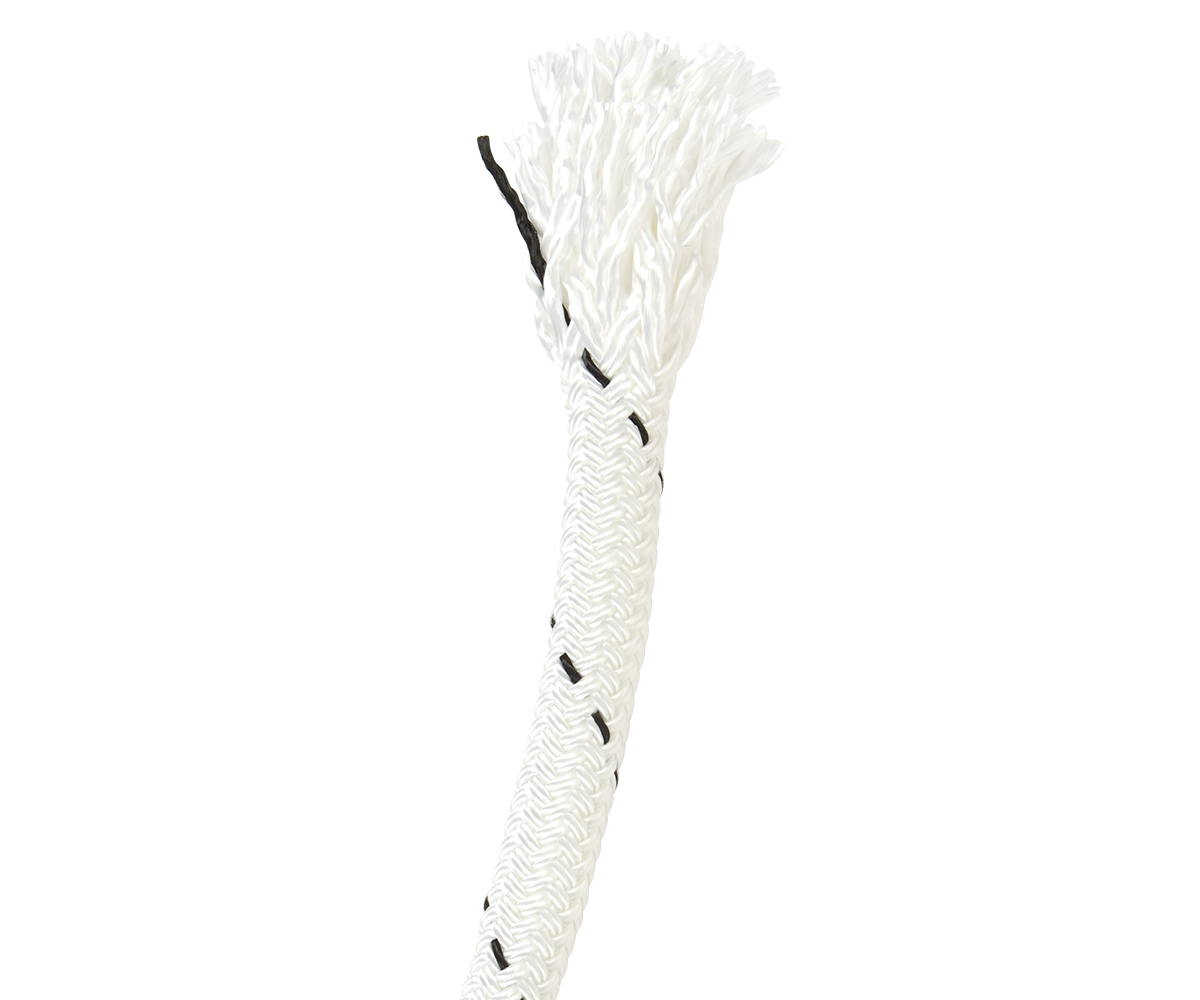Description
Inspection
The most common error in using rope is ignoring signs of excessive wear or damage incurred on the job. Any rope should be inspected frequently, especially if it is used in applications involving a risk of personal injury or property damage.
When inspecting rope, look for the following:
- Cuts, gouges, badly abraded spots.
- Seriously worn surface yarns.
- Considerable filament or fiber breakage along the line where adjacent strands meet. (Light fuzzing is acceptable.)
- Particles of broken filaments or fibers inside the rope between the strands. (Check inside the rope.)
- Discoloration or harshness that may mean chemical damage or excessive exposure to sunlight. Check filaments or fibers for weakness or brittleness.
- Kinks or hockles. If any of the above signs of possible damage appear, the rope may be unsafe.
Matching the Rope to the Application
All ropes have individual characteristics, reflecting the different properties of the various materials used in rope making. For example: Polyester (Dacron) has excellent resistance to abrasion, flexing, creep (tendency to elongate and break under continuous load), ultraviolet radiation, high temperature and most chemicals. It has low elongation and is unaffected by water. Nylon is about 17% lighter than polyester, rates about the same in abrasion, flexure, ultraviolet, and chemical resistance, but resistance to creep and elevated temperatures is somewhat lower, and it loses 10% to 15% of its breaking strength when wet. Higher elongation makes nylon excellent for dynamic loading, but due to its rapid recovery on release of load, there are hazards from recoil.
Polypropylene is the lightest of rope materials. It floats and is unaffected by water. It resists most chemicals, and has fair resistance to abrasion and flexure. Degradation will result from continuous or excessive exposure to sunlight or ultraviolet radiation. Breaking strength decreases as temperature rises, and its resistance to creep is poor. Combination ropes—blends of polyester and polyolefins—provide surface characteristics of polyester with the lightweight and economy of a polyolefin. Aramid (Kevlar) fiber is slightly heavier than polyester and has more than twice polyester’s tenacity. Creep resistance is excellent but resistance to abrasion and flexure are inferior. Low stretch prevents efficient utilization of its very high fiber strength except in small lines or special constructions.
Recommended Procedure for Using Rope
You can best utilize the strength of your rope and promote on-the-job safety by following these rules:
- Use eye splices at points of attachment. Avoid knots in rope.
- Avoid running rope over sharp corners or edges or around diameters less than eight times the diameter of the rope.
- Protect from damage such as cutting, wedging and severe abrasion.
- Store away from exposure to sun or rain, and avoid such exposure as much as possible.
- To dry wet rope, hang it loosely in coils.
- Keep rope away from chemicals harmful to your specific type of rope. (With nylon rope, avoid strong acids; polyester rope: strong alkalis; polypropylene rope: hot petroleum-based oils and solvents; manila rope: acids, alkalis, detergents, and most other chemical agents.)
Before Loading
Inspect the rope. Be sure the rope is in satisfactory condition and that you are using it in the recommended manner. Be sure that the load weight is accurately estimated, and that the rope selected is correct for that working load. You must determine if your application involves shock loading, long-term sustained loading or rated temperatures. If knots must be used for attachment or along the rope, or if the rope must be used around sharp bends or small radii, you must reduce by 40 percent the acceptable working load on the rope being used.

